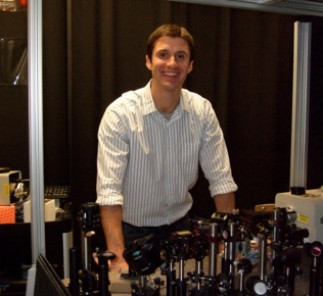Noel Chris Giebink, Department of Electrical Engineering, The Pennsylvania State University, University Park, PA, USA
Sunlight is a diffuse energy resource and thus all methods of solar energy conversion and use by society share one feature in common – concentration. Manipulating sunlight directly offers many prospects for a sustainable energy future, for example by reducing the cost of solar cells through optical concentration, routing natural daylight into buildings through optical fiber, or tailoring the distribution of light delivered to an algae culture to improve biofuel productivity. This talk will focus on recent developments in luminescent and quasi-static microtracking concentration that afford a general opportunity to address these applications in a potentially inexpensive and scalable fashion.
Whereas passive geometric optical concentrators are invariably bound by the sine limit, luminescent solar concentrators (LSCs) operate by absorbing and re-emitting sunlight, and can in principle achieve high concentration ratio (>100x) without tracking the Sun. We are exploring opportunities to improve LSC performance and diversify their application by photonically controlling the luminescent étendue. Leveraging highly directional luminescence within the framework of nonimaging optics, we demonstrate routes to both increase concentration ratio for photovoltaics and alternatively to optimize the distribution of light within closed photobioreactors for enhanced algal biofuel productivity.
Recent efforts in high efficiency concentrating photovoltaics (CPV) will also be discussed, focusing on a new paradigm that combines high efficiency microscale solar cells with wide-angle microtracking to enable 200x concentration ratio CPV panels < 1 cm thick that accomplish full-day tracking with < 1 cm lateral translation. This approach is experimentally validated outdoors for a small-scale panel prototype featuring 3D printed plastic lenslet arrays and GaAs microcell photovoltaics, representing an important step toward the goal of high efficiency embedded CPV systems that can be integrated on building rooftops and other limited-space urban environments in the form factor of standard fixed panel PV.
Site web du groupe du Prof. Giebink
Cette conférence est présentée par le RQMP Versant Nord du Département de physique de l'Université de Montréal et le Département de génie physique de Polytechnique Montréal.

